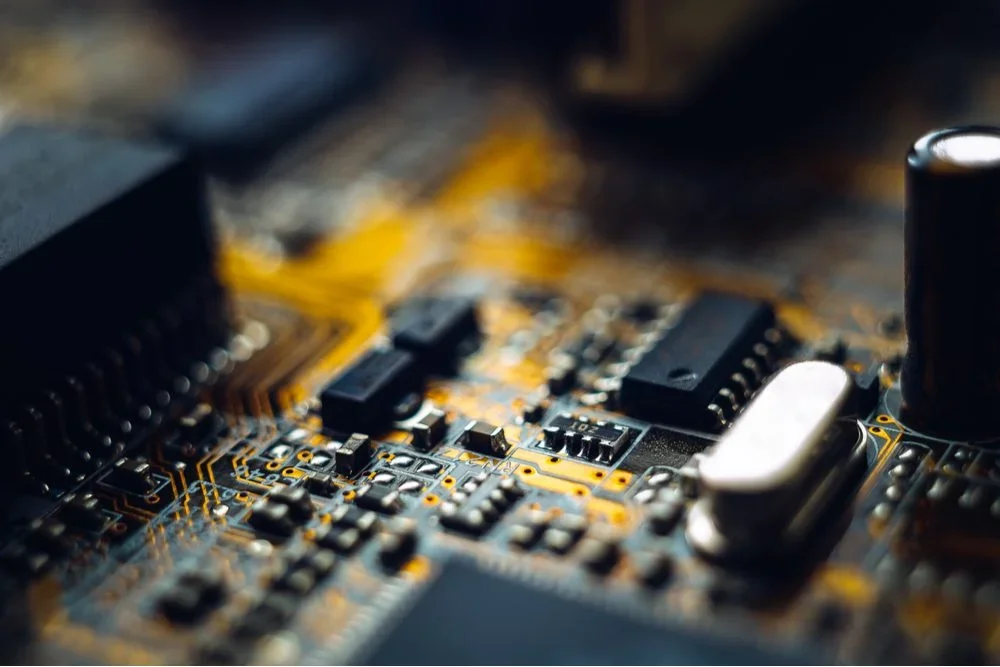
Obsolete electronic components present one of the most persistent challenges in electronics design and maintenance. As process technologies advance, earlier generations of microcontrollers, op-amps, and memory modules are phased out of production. Packaging transitions, such as the shift from through-hole to surface mount, have also made many widely used parts unavailable.
These changes leave engineers with products that still require long-term support but without guaranteed access to the parts on which they were built. Addressing this situation requires strategies that anticipate obsolescence and ensure designs remain viable throughout their intended lifecycle.
Obsolete Electronic Components and Their Challenges
Electronic components become obsolete for many reasons, yet the consequences extend well beyond the end of production. Some disappear because new manufacturing techniques make older processes impractical, while others vanish when market demand drops or companies discontinue less profitable product lines.
The impact is especially difficult for systems designed to operate for many years, where replacing a single part can trigger major redesigns or expose the supply chain to counterfeit risks. The table below highlights examples of components that have gone obsolete, the causes behind their disappearance, and the challenges they create.
| Component | Cause of Obsolescence | Challenge for Engineers |
| DDR2 memory modules | Superseded by DDR3 or DDR4 standards, offering higher performance | Established systems cannot easily transition, which leads to costly redesigns and validation |
| Through-hole op-amps and logic ICs | Replaced by compact surface-mount packages | Existing boards that rely on through-hole parts face compatibility and assembly issues |
| Tantalum capacitors in certain ranges | Declining demand and shift to ceramic or polymer alternatives | Engineers must requalify substitutes that may impact reliability or size constraints |
| Older D-subminiature connectors | Replaced by USB, HDMI, and other modern high-speed interfaces | Industrial and aerospace systems with long lifecycles require redesign to support new formats |
| Small-scale microcontrollers | The manufacturer's strategy to discontinue older architectures | Teams must migrate firmware and redesign around new architectures, which delays production |
Managing Component Obsolescence Risks
No electronic design can completely avoid the risk of component obsolescence, but its impact can be mitigated with the right approach. The key lies in shifting from a reactive mindset to a proactive one. Instead of waiting until a part disappears from the market, engineering teams can build resilience into their designs and procurement practices from the very beginning.
Using Lifecycle Management Tools
Modern lifecycle management platforms collect manufacturer data, market trends, and supply chain updates to forecast when parts may become obsolete. For example, a microcontroller flagged as “not recommended for new designs” can be identified before it is built into a critical control system, saving teams from future redesign costs. Tools such as SiliconExpert, IHS Markit Parts Intelligence, and manufacturer databases give engineers visibility into lifecycle risks so they can make informed design choices.
Building a Reliable Supplier Network
Relying on a single distributor increases the risk of shortages and counterfeit parts when a component goes obsolete. By maintaining relationships with multiple authorized distributors, engineers gain flexibility and sourcing confidence.
Aggregator platforms, like Octopart or Nexar, make it easier to compare stock across suppliers, while authorized channels provide traceable certificates of authenticity. For instance, sourcing a discontinued analog IC through a trusted distributor rather than an independent broker significantly reduces the chance of counterfeit components entering production.
Planning for Design Flexibility and Alternatives
Even with strong monitoring and sourcing, some parts will still become obsolete. Engineers can minimize disruption by qualifying alternates during the design phase. For example, specifying two pin-compatible operational amplifiers in the bill of materials allows production to continue if the primary choice is discontinued.
Many design teams use verified CAD models to cross-check footprints and identify replacements before they are needed. This proactive approach keeps production schedules intact and reduces the cost of urgent redesigns.

Sourcing Strategies for Obsolete Components
Once a component reaches end-of-life, the challenge shifts from prevention to sourcing. At this point, engineers must secure equivalent replacements that keep production moving while balancing cost, authenticity, and long-term availability.
One option is the last-time buy, where manufacturers announce a final purchase window before discontinuing the product. This approach works when demand is well forecasted and can cover years of future production, but it leaves little flexibility if product requirements change. Another common strategy is sourcing through authorized distributors, which provides traceable stock and manufacturer-backed quality, significantly reducing the risk of counterfeits.
When authorized channels cannot meet demand, some teams turn to independent brokers. This path can provide access to hard-to-find parts but comes with a higher risk of counterfeit components, requiring thorough testing and strict supply chain documentation to ensure reliability. In cases where the original part is no longer available, engineers often look to cross-referenced or pin-compatible alternatives. These substitutes can keep designs in production without requiring a complete redesign, provided they are carefully evaluated for compatibility and performance.

These sourcing strategies are most effective when supported by accurate design data and verified supplier information. Ultra Librarian simplifies this process by providing CAD models that integrate directly with popular ECAD applications and by connecting engineers to a wide network of global distributors. Instead of searching across multiple platforms, design teams can evaluate part alternatives, confirm sourcing options, and ensure their projects remain aligned with long-term availability.
Working with Ultra Librarian helps ensure streamlined, error-free design and procurement processes that reduce the impact of obsolete electronic components. Register today for free and equip your team with the tools to manage component change with confidence.








